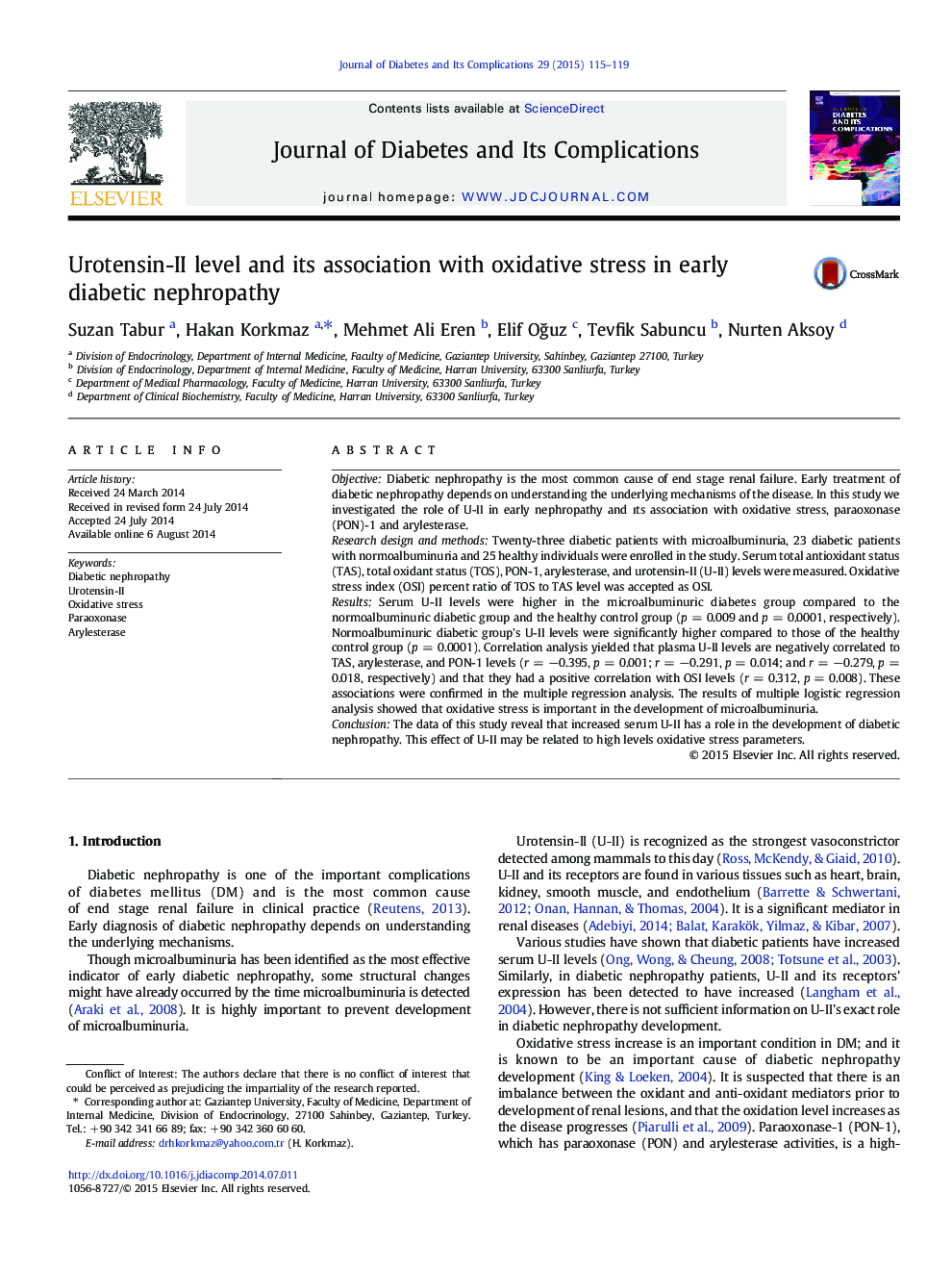| Article ID | Journal | Published Year | Pages | File Type |
|---|---|---|---|---|
| 5902825 | Journal of Diabetes and its Complications | 2015 | 5 Pages |
ObjectiveDiabetic nephropathy is the most common cause of end stage renal failure. Early treatment of diabetic nephropathy depends on understanding the underlying mechanisms of the disease. In this study we investigated the role of U-II in early nephropathy and ıts association with oxidative stress, paraoxonase (PON)-1 and arylesterase.Research design and methodsTwenty-three diabetic patients with microalbuminuria, 23 diabetic patients with normoalbuminuria and 25 healthy individuals were enrolled in the study. Serum total antioxidant status (TAS), total oxidant status (TOS), PON-1, arylesterase, and urotensin-II (U-II) levels were measured. Oxidative stress index (OSI) percent ratio of TOS to TAS level was accepted as OSI.ResultsSerum U-II levels were higher in the microalbuminuric diabetes group compared to the normoalbuminuric diabetic group and the healthy control group (p = 0.009 and p = 0.0001, respectively). Normoalbuminuric diabetic group's U-II levels were significantly higher compared to those of the healthy control group (p = 0.0001). Correlation analysis yielded that plasma U-II levels are negatively correlated to TAS, arylesterase, and PON-1 levels (r = â0.395, p = 0.001; r = â0.291, p = 0.014; and r = â0.279, p = 0.018, respectively) and that they had a positive correlation with OSI levels (r = 0.312, p = 0.008). These associations were confirmed in the multiple regression analysis. The results of multiple logistic regression analysis showed that oxidative stress is important in the development of microalbuminuria.ConclusionThe data of this study reveal that increased serum U-II has a role in the development of diabetic nephropathy. This effect of U-II may be related to high levels oxidative stress parameters.
